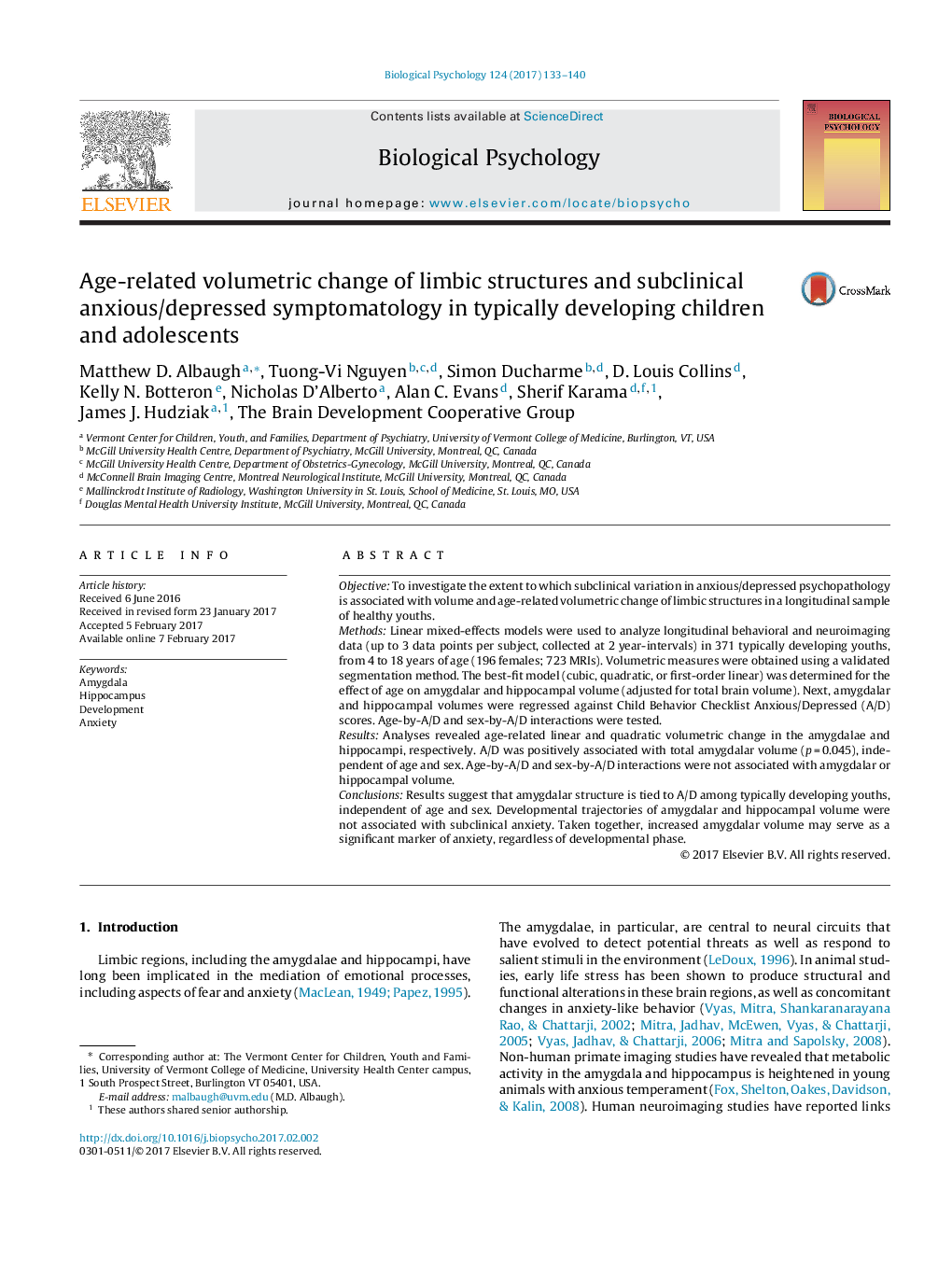| کد مقاله | کد نشریه | سال انتشار | مقاله انگلیسی | نسخه تمام متن |
|---|---|---|---|---|
| 5040466 | 1473850 | 2017 | 8 صفحه PDF | دانلود رایگان |
- Change in amygdala/hippocampus volume is characterized in youths, 4-18 years of age.
- Association between limbic structure and anxious/depressed (A/D) symptoms are tested.
- Across development, amygdalar volume is positively associated with A/D symptoms.
- A/D does not qualify the rate of age-related change in amygdala/hippocampal volume.
ObjectiveTo investigate the extent to which subclinical variation in anxious/depressed psychopathology is associated with volume and age-related volumetric change of limbic structures in a longitudinal sample of healthy youths.MethodsLinear mixed-effects models were used to analyze longitudinal behavioral and neuroimaging data (up to 3 data points per subject, collected at 2 year-intervals) in 371 typically developing youths, from 4 to 18 years of age (196 females; 723 MRIs). Volumetric measures were obtained using a validated segmentation method. The best-fit model (cubic, quadratic, or first-order linear) was determined for the effect of age on amygdalar and hippocampal volume (adjusted for total brain volume). Next, amygdalar and hippocampal volumes were regressed against Child Behavior Checklist Anxious/Depressed (A/D) scores. Age-by-A/D and sex-by-A/D interactions were tested.ResultsAnalyses revealed age-related linear and quadratic volumetric change in the amygdalae and hippocampi, respectively. A/D was positively associated with total amygdalar volume (p = 0.045), independent of age and sex. Age-by-A/D and sex-by-A/D interactions were not associated with amygdalar or hippocampal volume.ConclusionsResults suggest that amygdalar structure is tied to A/D among typically developing youths, independent of age and sex. Developmental trajectories of amygdalar and hippocampal volume were not associated with subclinical anxiety. Taken together, increased amygdalar volume may serve as a significant marker of anxiety, regardless of developmental phase.
Journal: Biological Psychology - Volume 124, March 2017, Pages 133-140
